VisionIAS
13:55
Wednesday, August 05, 2020
Tuesday, August 04, 2020
Meet UPSC civil services exam 2019 topper Pradeep Singh from Haryana
VisionIAS
19:47
Pradeep had cleared the UPSC civil services exam last year and is presently under training as an Indian Revenue Service Officer in Faridabad, Haryana.
Pradeep Singh from Haryana’s Sonepat district has topped the UPSC Civil services exam 2019, results of which were declared on Tuesday. Pradeep had cleared the UPSC civil services exam last year and is presently under training as an Indian Revenue Service Officer in Faridabad, Haryana.
Singh’s father Sukhbir Singh is the former Sarpanch of Tewri village in Sonepat’s Ganaur block. His father served as village Sarpanch twice and grandfather once. Pradeep’s parents are currently staying at Omax city in Sonepat.
Pradeep said that his father, who is a farmer, inspired him to become an IAS officer and he wants to work for the welfare of the farming community.
“My focus was to cover targeted syllabus every day. UPSC demands consistency and sometime I felt that I was not consistent but my father encouraged me. My father is a farmer and mother is housewife”, he added.
“After completing my graduation I took coaching for Staff selection commission (SSC) and got first job as Income Tax officer in Delhi five years ago. I had appeared for UPSC exam four times. Last year, I got 260th rank and now I am posted as Indian Revenue Officer in Faridabad”, the UPSC topper further added.
Pradeep Singh said that it was very difficult for him to study and do job at the same time.
“My few friends also helped me in cracking this exam. I have achieved this feat by doing self study. At one time, I thought to stop preparing for IAS, but my father told me not to lose patience and do hard work. Self-motivation is the best key to achieve any goal. Do not listen to what others are saying, only an individual knows his/her potential”, he added.
The UPSC topper Pradeep Singh said that he had studied till class 7 in government school at his native Tewri village and later his family had shifted to Sonepat. He did his class 12 from Shambhu Dayal modern school, Sonepat in 2008 and graduation in Engineering from Murthal University, Sonepat in 2012. His elder brother Ajit is married and younger sister Manisha, is post-graduate in Mathematics.
Pradeep’s father Sukhbir Singh said that he had shifted his family to Sonepat in early 2000’s for his children’s education.
“I had told Pradeep to make constant efforts to become an IAS and do not think about from where I will bring money for his study. Today, he made every Haryana resident proud. He told me that UPSC has declared results and when I asked him about his result, he came close to me and said he had topped the exam by hugging me. I want to tell all farmers’ and labourers that their children have more appetite to become an IAS”, his father added.
Source: hindustantimes
Daily Current Affairs, 04th August 2020
VisionIAS
17:26

1) National Programme ‘Vidyarthi Vigyan Manthan 2020-21’ launched
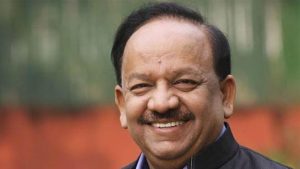
•Vidyarthi Vigyan Manthan (VVM) is an initiative of Vijnana Bharati (VIBHA) and Vigyan Prasar. The programme has been conceptualised to identify the bright minds with a scientific aptitude among the student community.
2) Andhra Pradesh government launches ‘E-Raksha Bandhan’
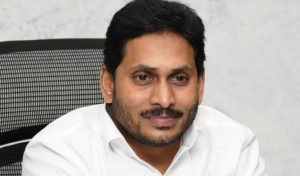
•With this online awareness drive, state government aims to train as many as 1 lakh women, girls and the general public up to August 31. Hence, the ‘E-Raksha Bandhan’ will ensure the safety of women and children in cyberspace. State police and CID has also publicised a slogan “Let us make August a month of e-freedom and e-safety”.
3) MSME Minister launches Khadi’s Gift Box of Silk Mask

•The KVIC developed gift box comprises of four handcrafted silk masks in different colors and prints. These triple-layered silk masks are skin-friendly, washable, reusable as well as bio-degradable. The Khadi’s Gift Box has been launch to tap the foreign market and a large Indian population looking for reasonably priced gift items.
4) Mohamed Irfaan Ali named as President of Guyana

•David A. Granger is a member of A Partnership for National Unity and Alliance for Change (ANPU-AFC). The PPP won 33 of the 65 seats in the National Assembly with 233,336 votes, while the APNU-AFC earned 31 seats with 217,920 votes.
5) A book titled “Siyasat Mein Sadasyata” authored by Vijay Kumar Choudhary
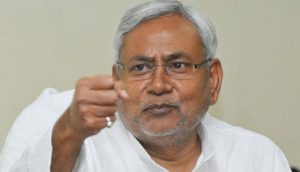
6) Nitin Gadkari approves “Khadi Agarbatti Aatmanirbhar Mission”
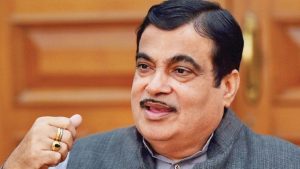
•Under the scheme, Automatic Agarbatti making machines and powder mixing machines would be offered by KVIC to the artisans via the successful private Agarbatti manufacturers. KVIC will procure only locally made machines by Indian manufacturers which also seeks to encourage local production.
•The “Khadi Agarbatti Aatmanirbhar Mission” seeks to generate employment for unemployed and migrant workers in different parts of the nation while increasing the domestic Agarbatti production substantially. It will be launched in PPP mode and requires very less investment. It will support private Agarbatti manufacturers to increase Agarbatti production without any capital investment by them. KVIC will offer 25% subsidy on the cost of the machines and will recover the remaining 75% of the cost from the artisans in the form of easy monthly installments.
7) India withdraws from women’s world team Squash championship

8) Govt of India gave nod to IPL 2020 in UAE
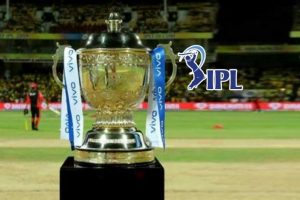
Grants for College Students: Complete Guide on How to Get into Any Program
VisionIAS
15:22
Are you looking for an opportunity to get the grant
that’s rated as one of the best but not sure how you can do it and what you
should apply for? No worries: on this website, you will find all the details on
a variety of different grants as well as some tips on how to write a grant
application fast. Find more details on this page right
now!
Best Grants for College Students: Top 8 Scholarships for Everyone
The HINDU Notes – 04th August 2020
VisionIAS
13:44

📰 A year on, Article 370 and Kashmir mythmaking
The August 5 decision has led to a state wherein the very basis of a potential step of conflict resolution has been undone
•While the long-standing ideological commitment of the Bharatiya Janata Party to undo Article 370 of the Indian Constitution is why Jammu and Kashmir (J&K) was stripped of its special status as well as Statehood making it a simmering cauldron of discontent, our collective mythmaking about Kashmir is the deeper reason for what the former State has become today.
•Kashmir has been a favourite site of our national mythmaking; myths that have over the years assumed larger-than-life manifestations in our collective psyche. Kashmir has most things that popular myths are made of: mesmerising beauty, cross-border terror, deep states and their agents, war and heroism. Clearly, myths about Kashmir are not created by the right wing alone but by successive Indian governments over several decades, enthusiastically embellished by a vibrant, popular culture.
Demonising Kashmir
•The most prominent among them is regarding the ills of Articles 370 and 35A of the Indian Constitution. Home Minister Amit Shah’s statements last year on the floor of Parliament that Article 370 was the root cause of terrorism in Jammu and Kashmir is a widely accepted sentiment notwithstanding the fact that there is little material basis to it — neither was Article 370 responsible for terrorism in the Valley nor has its removal ensured a reduction in terrorism. If anything, Article 370 continues to remain very much a part of a solution to the Kashmir conundrum. The constitutional provision is also held responsible for ruining J&K, stalling its development and preventing proper health care and blocking industries. Once again, these arguments lack merit and evidence.
•J&K, as a matter of fact, has been doing much better than most other Indian States and one of the reasons for this was the land reforms carried out in the State in the early 1950s which was possible precisely because of the presence of Article 370. For sure, the educational and health sectors in J&K should be further improved (as should be in the rest of the country), but the reason for the underperformance of the educational and health sectors in Kashmir is not Article 370. While private enterprises could set up industries in the former State on leased land, as they have over the years, acquisition of land by public sector enterprises from outside the State was never a problem. Private investors do not set up shop in Kashmir due to militancy which is a product of an existing conflict; not because of Articles 370 or 35A. In any case, Articles 370 or 35A did not start the Kashmir conflict; if anything, they played a role in containing it.
Funding truths
•The oft-cited counter-argument is that if J&K is doing better than the other Indian States, it is because of the massive amounts of funds provided by New Delhi. That is the second myth. How subsidised by New Delhi was J&K? Did ‘our’ taxpayer money actually go into sustaining J&K’s relatively better position among the Indian States? Well if it did, it would weaken the argument that ‘Kashmir needed to be developed’.
•The argument is not that Kashmir did not receive funding from New Delhi. It did, but not massive funds as it is often made out to be. Economist and former State Finance Minister of J&K Haseeb Drabu makes a distinction between funds that went to the J&K government and those that went into economic development in the State. The J&K government’s revenue deficit has traditionally been taken care of by New Delhi: J&K, for historical reasons, has had a bloated bureaucracy in comparison to other States and their salaries and pensions have been financed by the central government. But that does precious little for the State’s economy or the general population. Then there are routine transfers of funds from the Centre to J&K just as transfers take place from New Delhi to other States. Finally, J&K also received funds thanks to its status as a special category State which again is a case with several other Indian States. Put differently, J&K’s better performance in comparison to most other Indian States is at least partly because of Article 370, and its well-being is not necessarily a result of New Delhi’s economic packages.
•Let us take the third myth about Kashmir, one that is repeated by politicians and scholars alike: ‘Development can defeat militancy and insurgency.’ Notwithstanding the fact that a cash-strapped country such as ours has inherent limitations on how much development assistance it can provide to J&K over other States, the reality may well be that development may not lead to pacification of the conflict in Kashmir. The Kashmir conflict is a function of complex historical grievances, politico-ethnic demands, increasing religious radicalisation, and Pakistan’s unrelenting interference in the Kashmir Valley. It would be simplistic to imagine that such a multi-layered and complex conflict can be resolved by the stroke of a pen effecting a constitutional change or providing an economic package. A cursory reading of the vast literature on conflict resolution would testify to that.
The deep impact
•This overwhelming mythmaking on Kashmir has had unfortunate implications on how we understand and treat Kashmir and Kashmiris. The rare political unity in the rest of the country supporting the August 5 decision, especially on Article 370, was a function of this mythmaking. The popular cultural articulations about Kashmir and Kashmiris in the media, films, music and other cultural representations have further strengthened these myths. That “Kashmir needs to be reunited with the rest of India” has been a powerful claim made by such representations and political articulations: no matter Kashmir was easily India’s most securitised State with various central institutions and agencies undermining not only what was left of Article 370 prior to August last year but also impeding the elected government’s power in the former State.
•Yet another popular perception about ‘Kashmiris as troublemakers and sympathisers of terror’ has led to a noticeable increase in the mistreatment of Kashmiri Muslims in the rest of the country. How little empathy exists in the country today towards the plight of the Kashmiris (including mainstream politicians) is a direct outcome of such mythmaking.
Hard realities
•This mythmaking about Kashmir has today led us to a situation wherein we have undone the very basis of a potential process of conflict resolution in Kashmir. If indeed Article 370 was a stumbling block in bringing Kashmir closer to the rest of India, a source of extremism and separatism in the Kashmir Valley, and an avenue for Pakistan to gain a foothold in the Valley, has the removal of the special status brought Kashmir closer to India, reduced the sources of extremism and separatism, and undermined Pakistani influence in the Valley? Most indicators of violence in Kashmir have shown an uptick despite the double lockdown that Kashmir is under today. Mainstream Kashmiri politicians today are as unhappy and disgruntled as the separatist politicians and the restive youngsters in South Kashmir. And Pakistan has left no stone unturned to aid and abet violence in the Valley. For Rawalpindi, all bets are off on Kashmir. India’s national interest hardly benefits from such a toxic situation.
•New Delhi’s Kashmir policy today is caught between a rock and a hard place: there is no indication that the path that it chose in August 2019 would lead to peace and development in the Valley, nor can it revert to pre-2019 August status quo which would be political suicide for the BJP.
📰 A change that hit federalism, inclusion
CIVIL SERVICES EXAMINATION, 2019 FINAL RESULT
VisionIAS
11:53
CIVIL SERVICES EXAMINATION, 2019 FINAL RESULT
Click Here to download CIVIL SERVICES EXAMINATION, 2019 FINAL RESULT
Click Here to Like our Facebook page for latest updates and free ebooks
THE HINDU NEWSPAPER IMPORTANT ARTICLES 04.08.2020
VisionIAS
08:41

Click Here to Like our Facebook page for latest updates and free ebooks
Click Here to Like our Facebook page for latest updates and free ebooks




